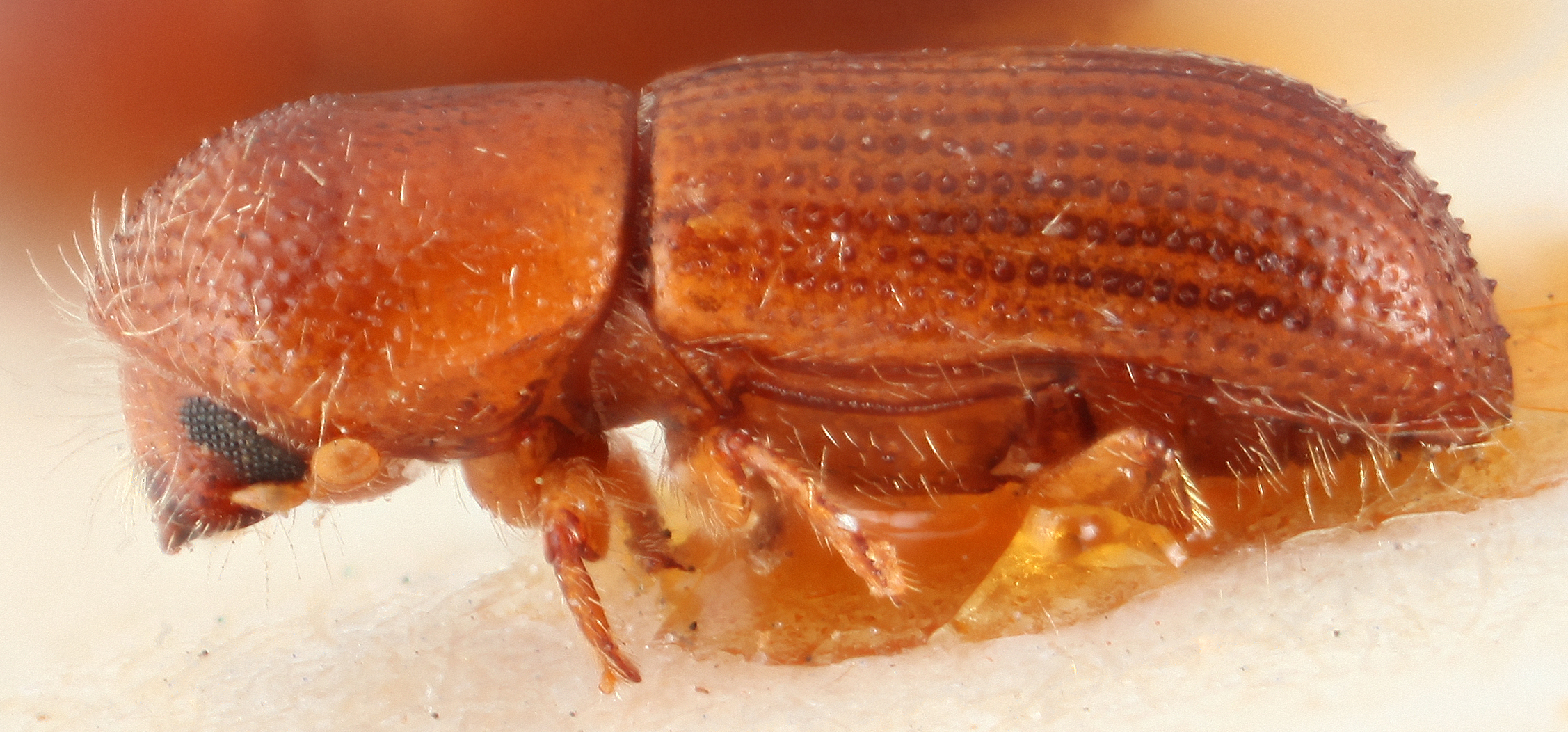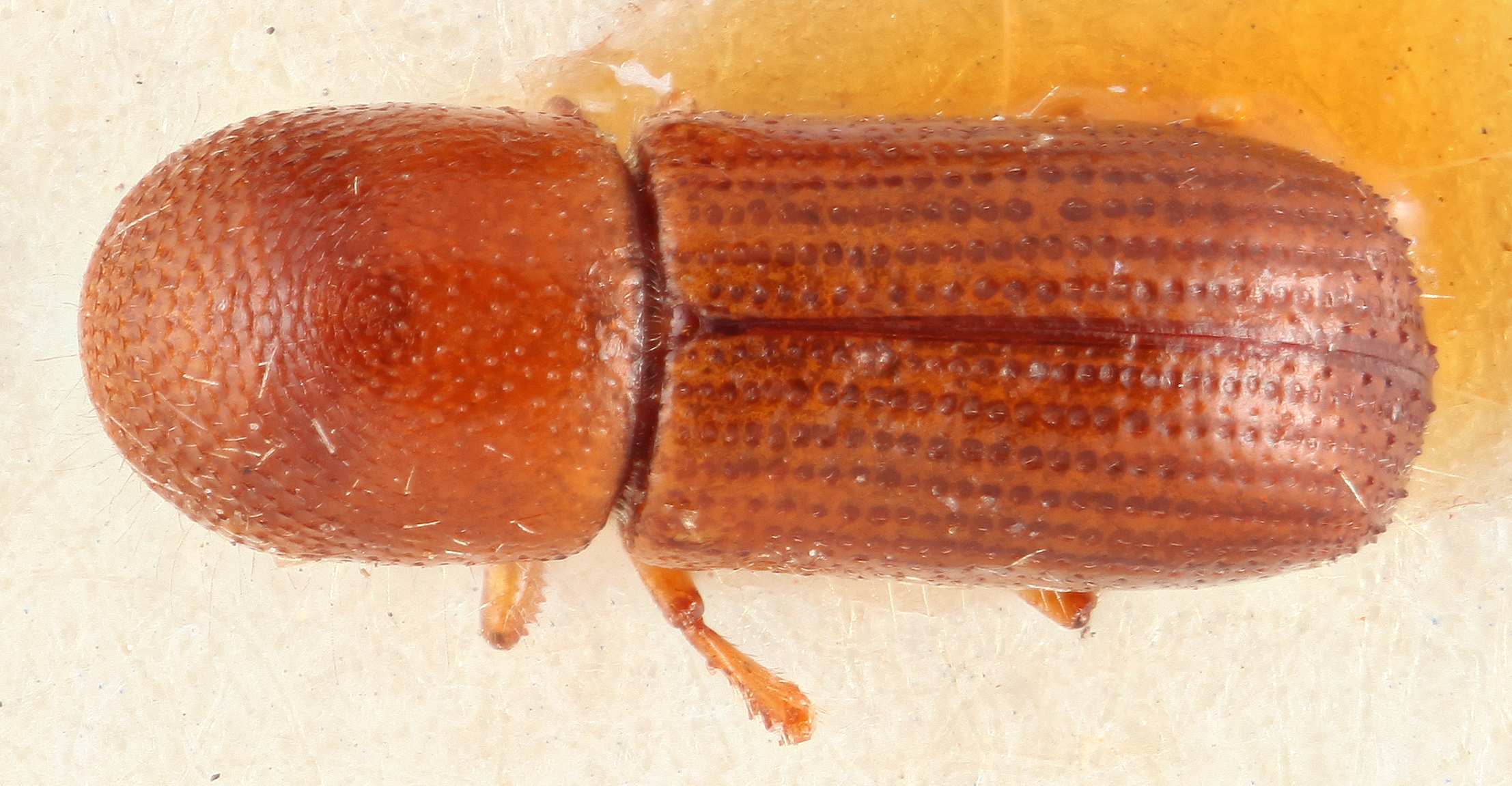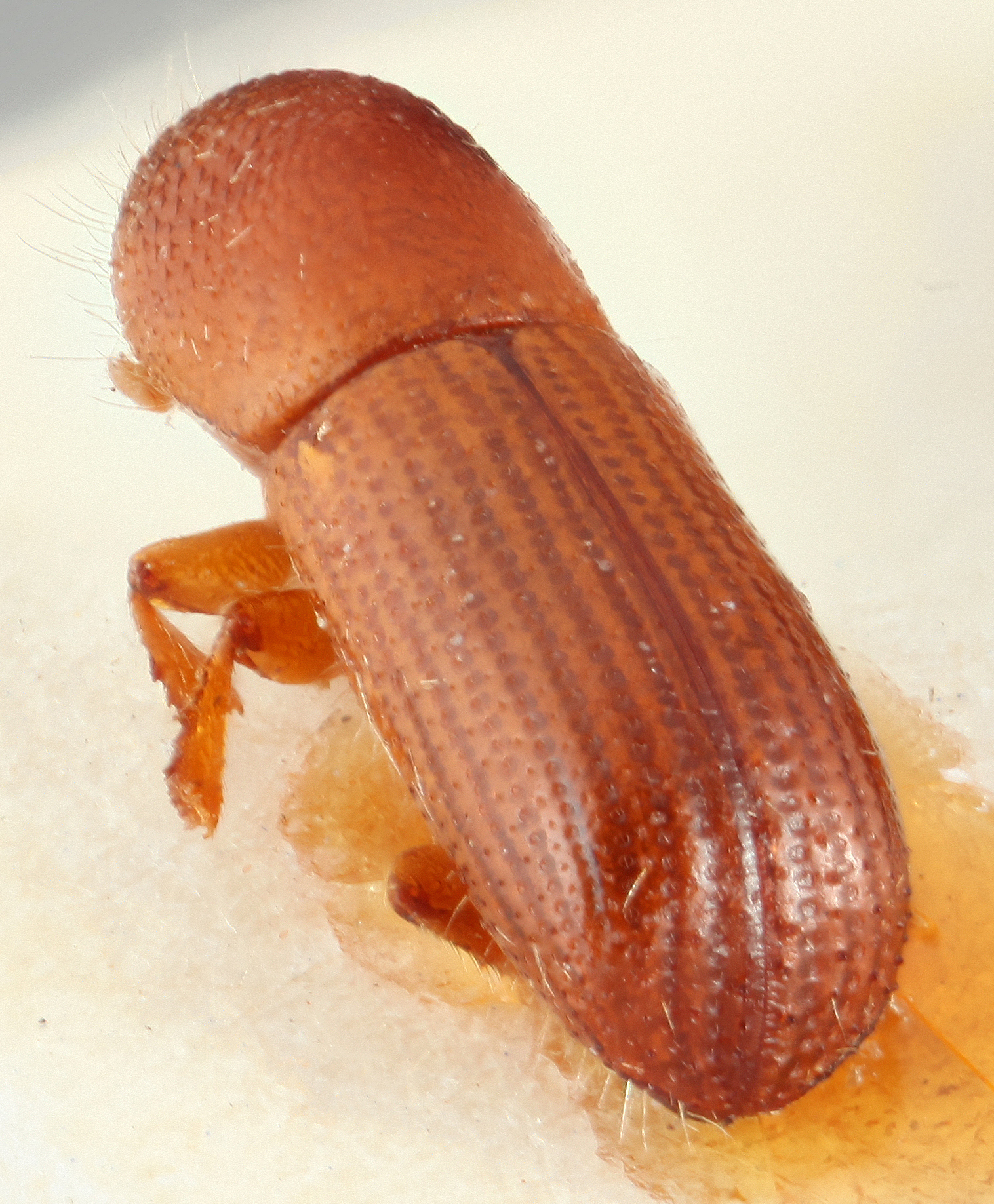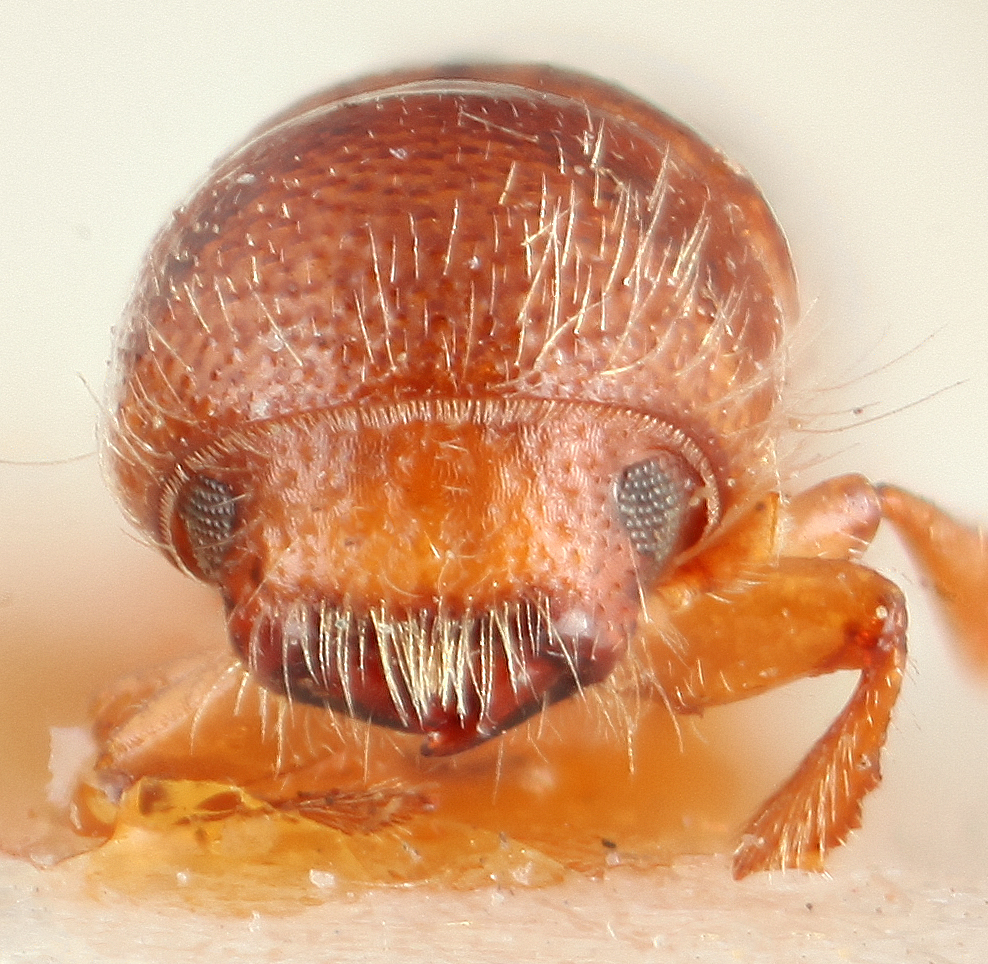Xyleborus dryographus
|
Xyleborus dryographus lateral; S.M. Smith |
|
Xyleborus dryographus dorsal; S.M. Smith |
|
Xyleborus dryographus declivity; S.M. Smith |
|
Xyleborus dryographus frontal; S.M. Smith |
Taxonomic history
Xyleborus dryographus Ratzeburg 1837: 167.
Diagnosis
2.4−2.7 mm long (mean = 2.58 mm; n = 5); 3.0−3.4 times as long as wide. This species is distinguished by the protibiaprotibia:
tibia of the first pair of legs
obliquely triangular, broadest at distaldistal:
situated away from the body
third; declivitaldeclivital:
pertaining to the elytral declivity
interstriae 1 parallel to suture; and declivitaldeclivital:
pertaining to the elytral declivity
interstriae 1−3 each with a row of regularly spaced minute denticlesdenticle:
a small tooth, the sides of which are equal and the tip is above the middle of the base .
.
This species is very similar to X. ohtoensis and is distnguished by its larger size and less prominent pronotalpronotal:
pertaining to the pronotum
summit.
May be confused with
Distribution
Only occurring in Japan in the study region. Xyleborus dryographus is a widely dsitrubuted Palearctic species, from North Africa (Algeria, Egypt, Libya, Morocco, Tunisia), Europe (Azerbaijan, Austria, Belgium, Bosnia Herzegovina, Bulgaria, Croatia, Czechia, France, Great Britain, Germany, Hungary, Italy, Luxembourg, Macedonia, Poland, Portugal, Slovakia, Slovenia, Spain, Russia, Switzerland, Ukraine, Serbia and Montenegro), Asia (Iran, Iraq, Turkey).
Host plants
recoded from Castanea, Fagus, Quercus, (Fagaceae) and Ulmus (Ulmaceae)





